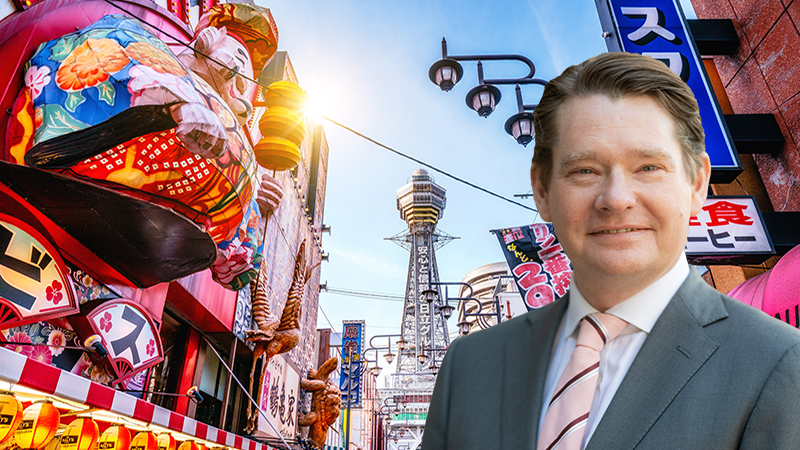By David Mitchinson, co-founder and fund manager at Zennor Asset Management
Having just returned from a month-long stay in Japan – mostly outside Tokyo – the overwhelming impression is that Japan is in a buoyant mood. Tokyo is always busy, crowded and thriving. That has not always been the case elsewhere. Demographics, a long-term sluggish domestic economy, and a lack of risk-taking entrepreneurialism have all taken their toll on non-Tokyo Japan since the bubble.
Not this time
Covid has changed some aspects of behaviour – the huge numbers of campers and glampers, and a rediscovery of the beauty of the countryside are among them. This has also encouraged investment in new activities such as rafting, aerial assault courses, mountain bike tracks and the physical infrastructure of hotels, restaurants and shops that come with this growing demand. Much of this is from small-scale individual entrepreneurs, not the large businesses listed on the stock market.
See also: SuMi Trust’s Suzuki: Using Japanese stocks to capture India’s growth
In practical terms it means that finding a builder is hard, getting and retaining staff is difficult, and land prices are rising in many areas. Many individual business owners are doing very well, as seen in the new cars and house construction. Their animal spirits are awakening.
For an economy that has suffered from a chronic lack of demand, this is good news. For a country where wages have been stagnant for 30 years, it suggests that for at least some workers things are looking up. When we add in the ongoing rebound in international tourists you can viscerally feel the strength of activity. This is only a snapshot of the Japanese story – not everywhere is booming, not everyone is doing well but many places and people are.
This can be seen in the economic data, with the domestic economy showing solid performance, whilst export sectors are being held back by weak Chinese demand.
Our holdings such as discount airline operator Skymark should be prime beneficiaries of this increased domestic activity. Recent trading has been strong with passenger numbers and revenues surpassing their plan. CPI Core Core, which the Bank of Japan (BoJ) favours, has also shown continued resilience and is at the highest level since 1981 at 4.3%.
This isn’t just a case of the weak yen but every day, domestic products such as house insurance, toilet paper, fish and eggs. As in the UK, these are costs that everyone can see and this is starting to change consumer psychology. Price changes have gone from rare to commonplace. This hints at a more dynamic pricing regime against the very sticky prices of the past 30 years.
See also: A tsunami of yen: Could a Japanese policy shift spark a global bond sell-off?
From a portfolio perspective, this suggests buying domestic firms with pricing power, which can sustain and improve margins. In many cases, firms are having to relearn how to ask for price hikes – just as their customers are having to learn how to pass these costs on. Other companies are benefitting from a bifurcation in the market with some consumers spending on luxuries and experiences whilst others look to economise and switch to private brands; our holding Lifedrink is a big beneficiary of this trend.
Just now the government is in a bit of a bind; it wants price hikes that hurt consumers to wind back, and at the same time for the era of deflation to be decisively over. This conflicted policy regime setting is one reason that the yen is so weak. The BoJ has to be seen to do something to appease politicians; it is at the same time very aware that it has raised policy too fast on several occasions and that they want to be behind the curve to ensure reflation is well embedded.
As we have discovered, getting ‘goldilocks inflation’ is hard – too little momentum and the economy runs cold, too much and inflation gets hot and soars. The BoJ’s published forecasts have been consistently behind the curve for some time – having been too optimistic for many years – so now it seems determined to err on the side of overshooting. At some point, rates will have to close the gap. The current top of the policy band is 1%, but inflation is running at 4.3%. Policy settings are certainly easy.
See also: Value in Japan? Where investors can still find mispriced opportunities
We do not believe that a positive yield curve is priced into our investments in banks – investors are scarred many times over in this area. Our holdings have the extra kicker of large investment portfolios, which shareholders are placing them under pressure over.
Given their very low valuation, something going right, such as higher interest rates or increased shareholder returns, would be very supportive for share prices. The government has also committed to a semiconductor and defence industrial policy, supporting new investment in Kyushu by TSMC, and sharply growing Japan’s defence spending.
Other firms are investing in the energy transition and increasing renewable weightings in the electricity grid. These translate into activity on the ground in Japan – not just accumulating within the financial system. To us, they also suggest, finally, that demand in Japan has balanced supply, and that a more sustainable economy is now emerging from its post-bubble torpor.







